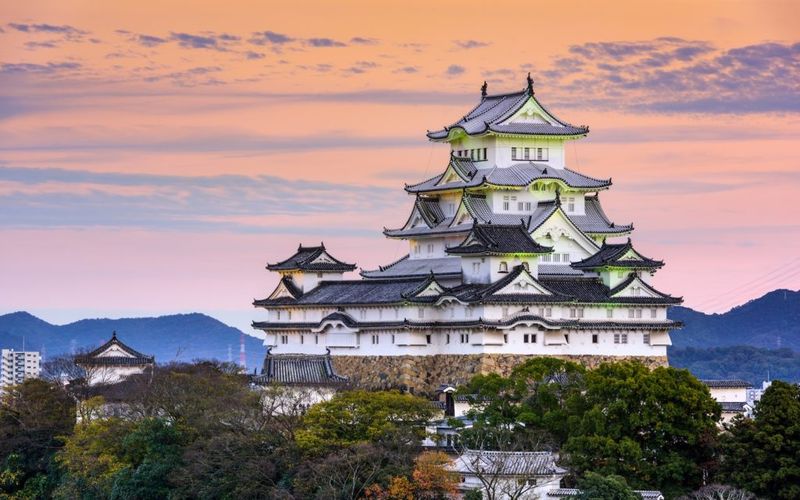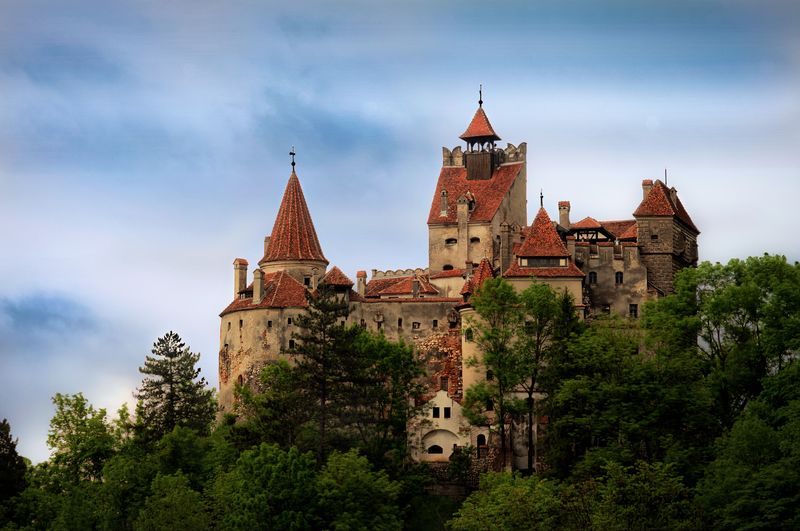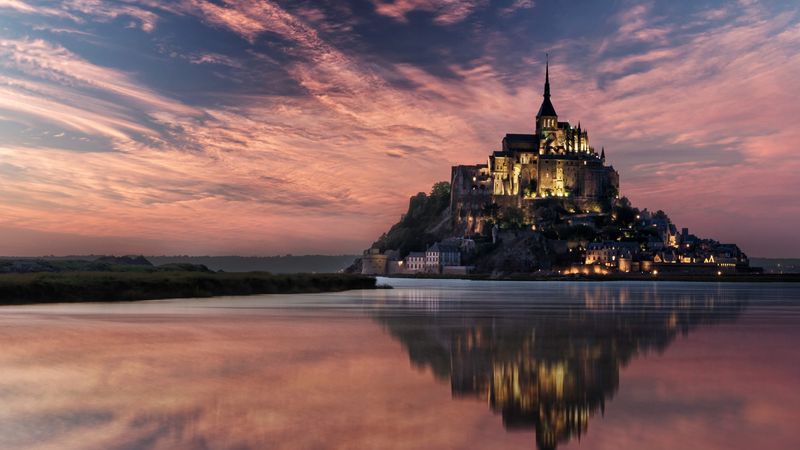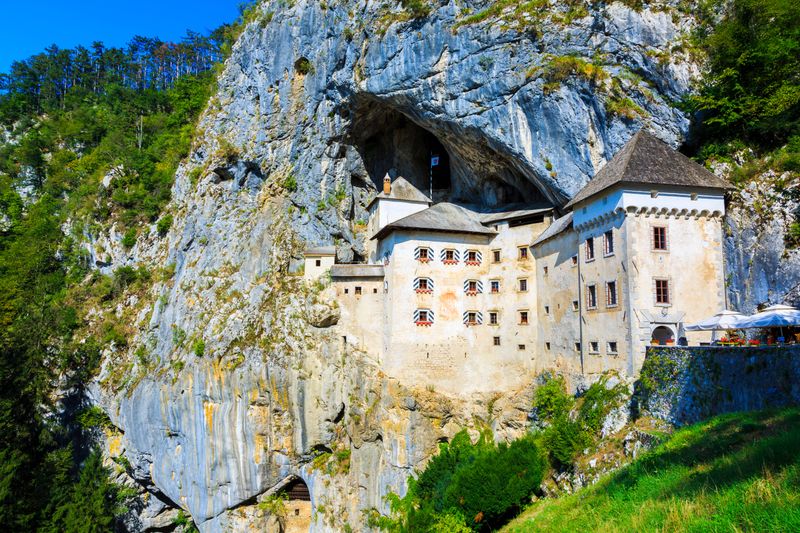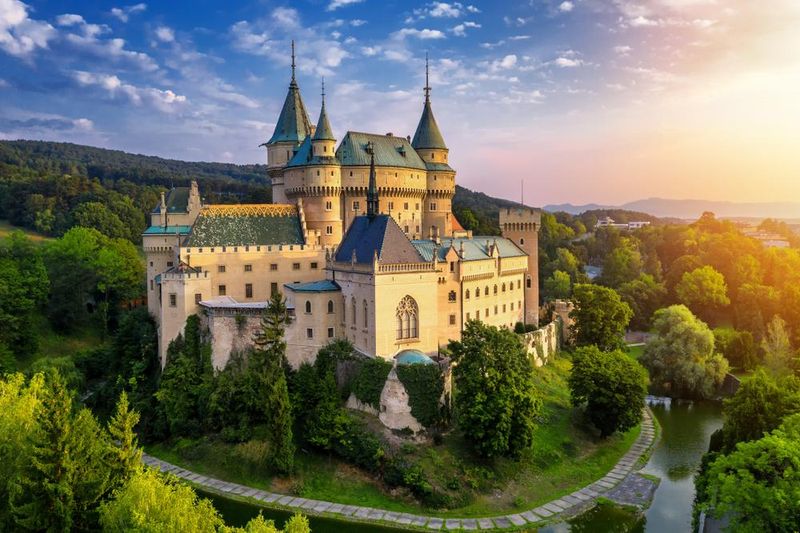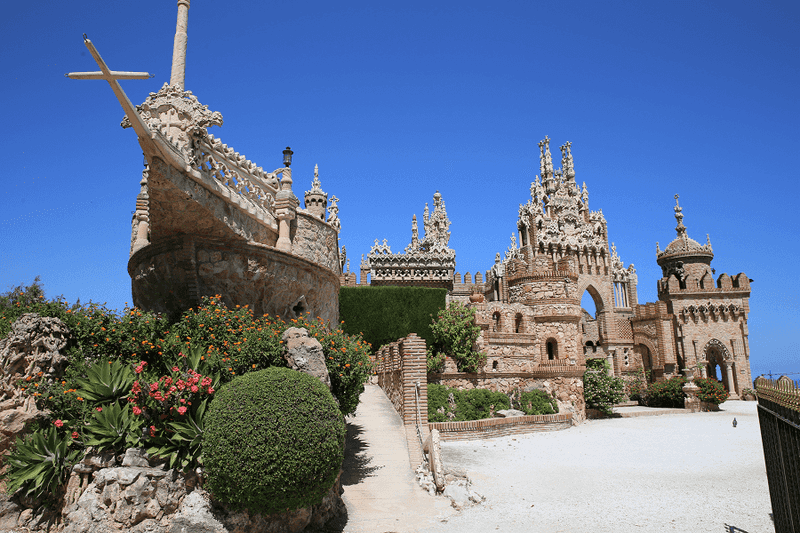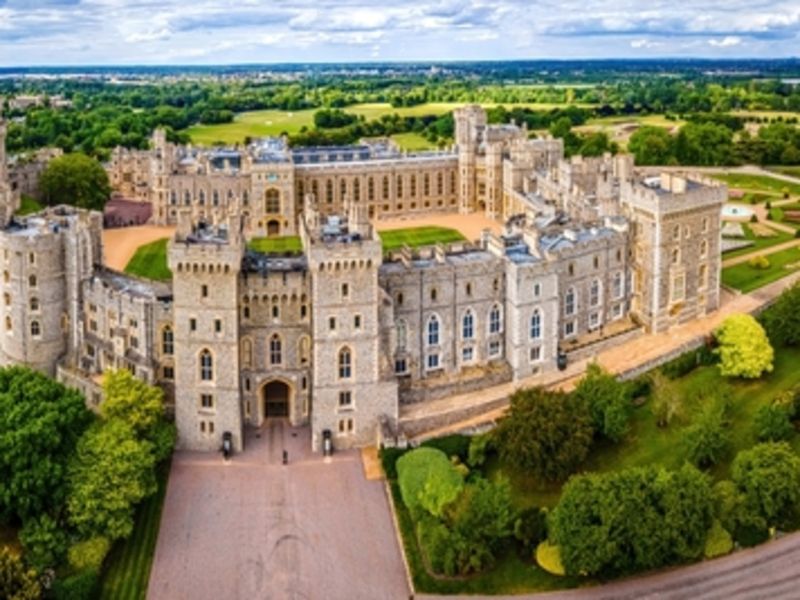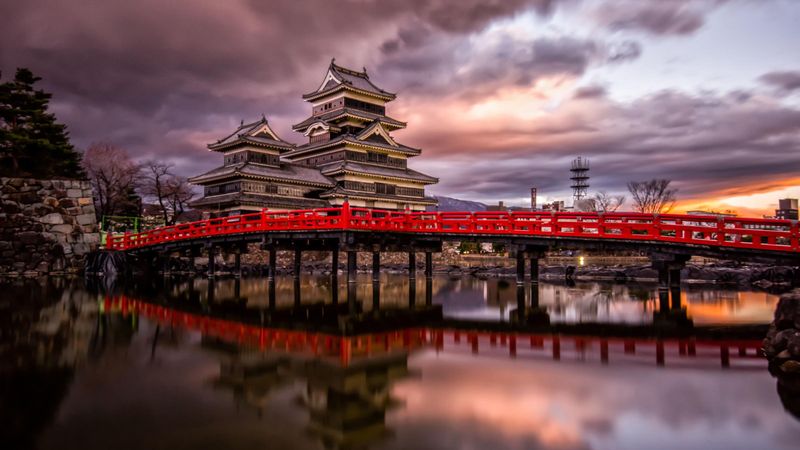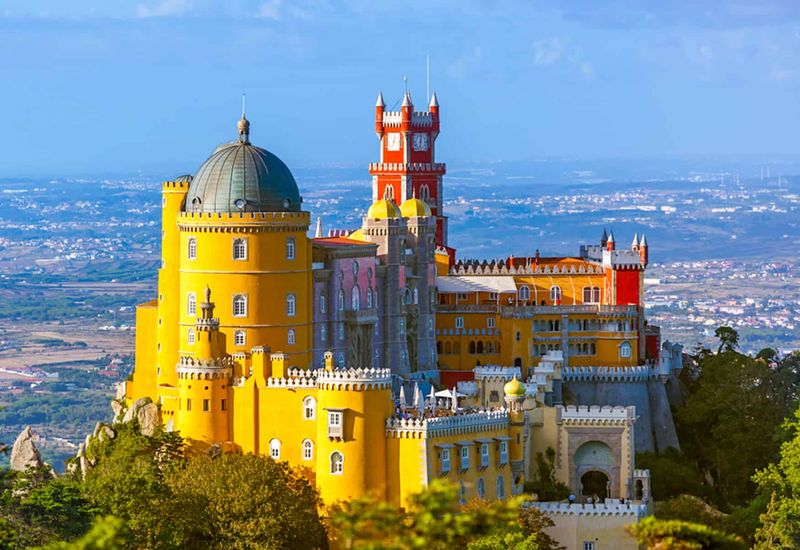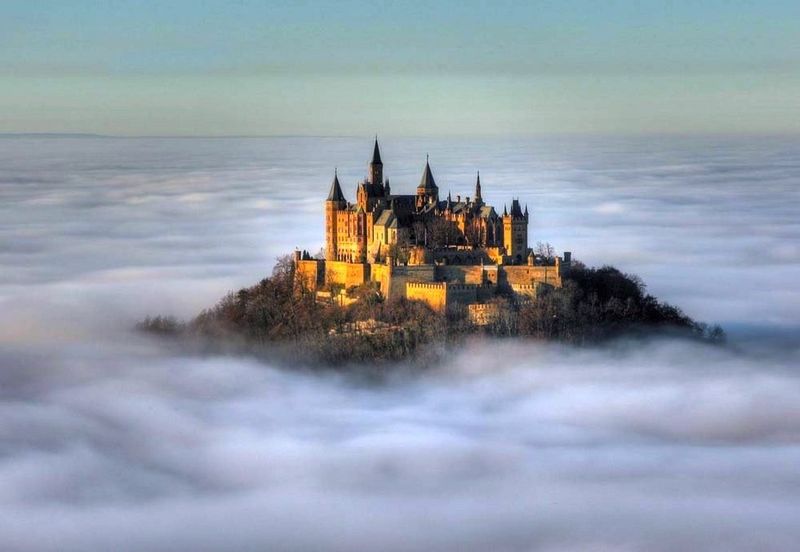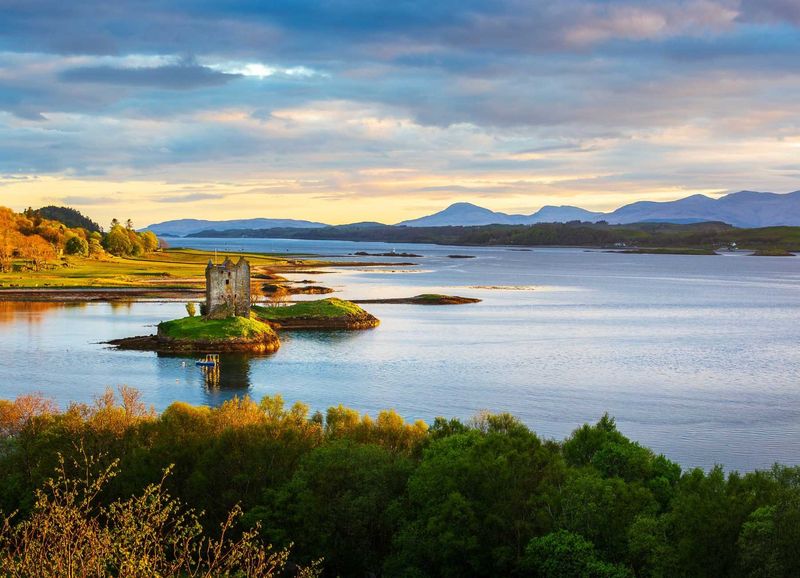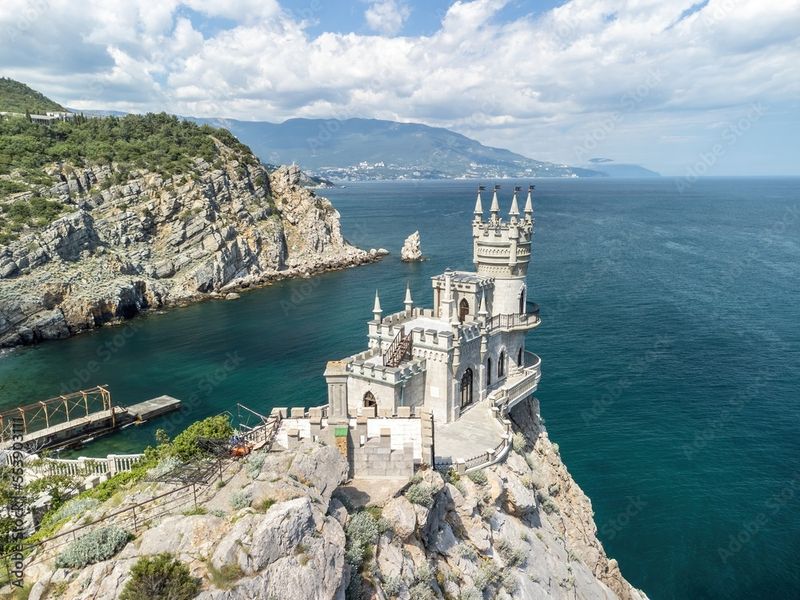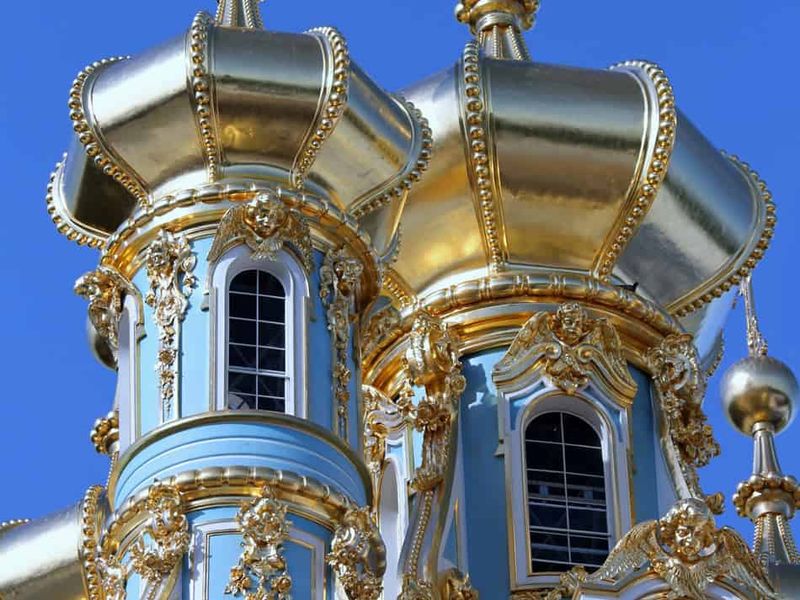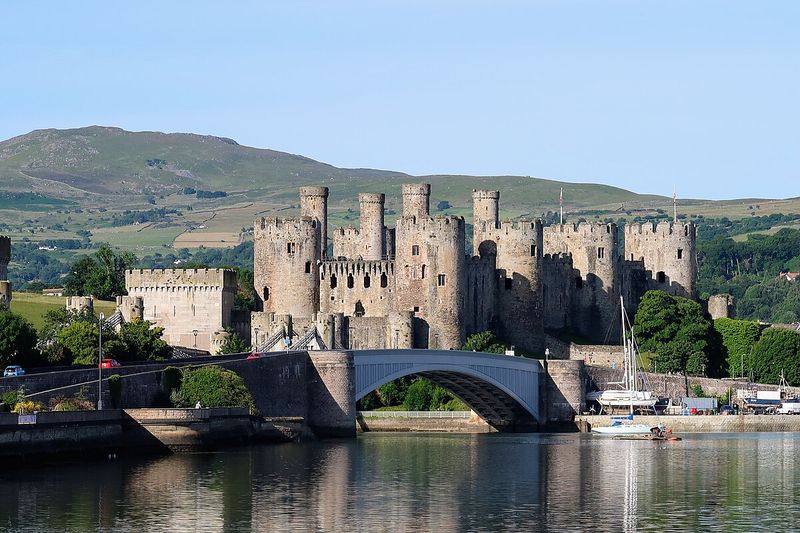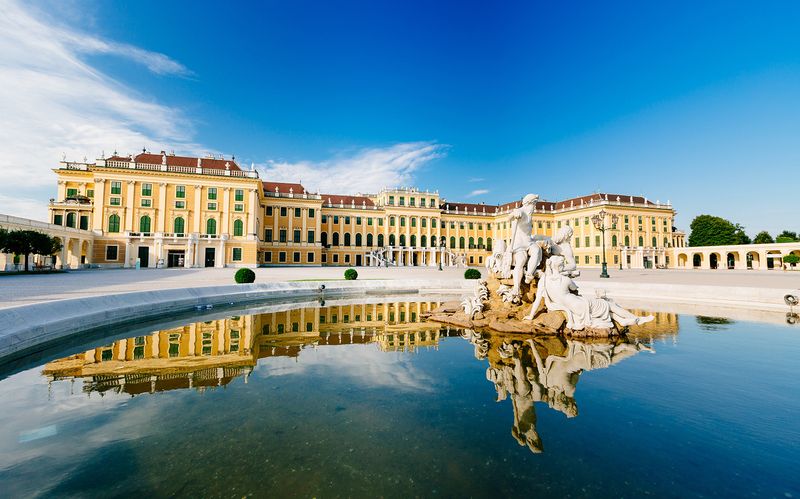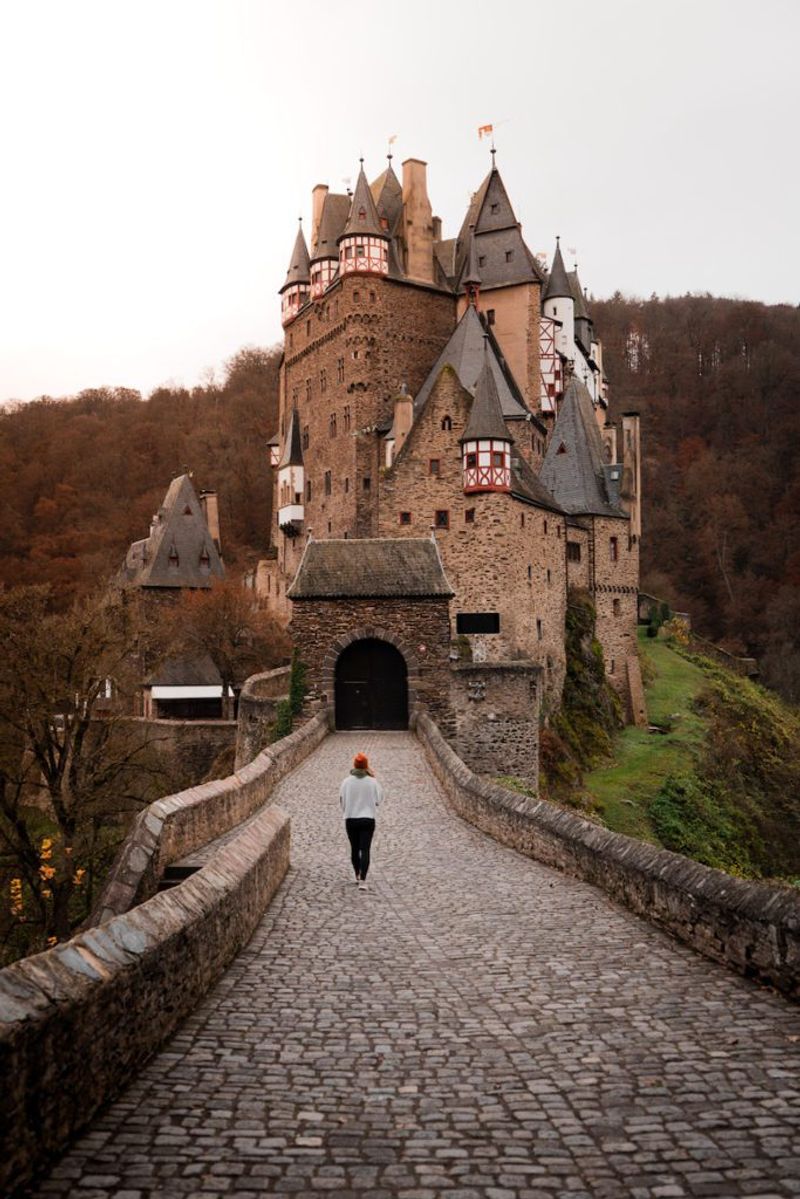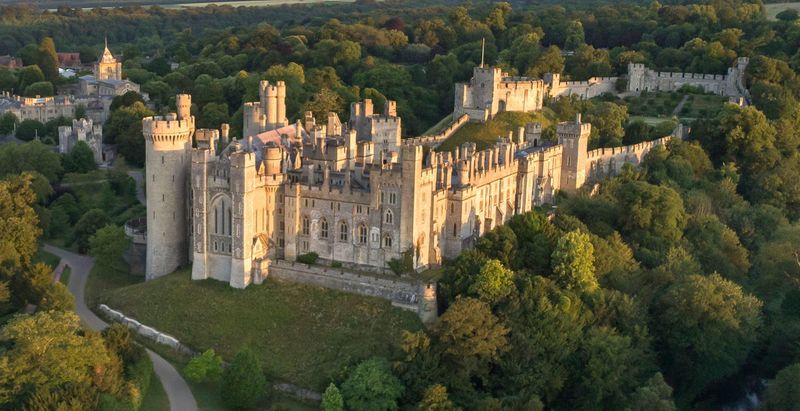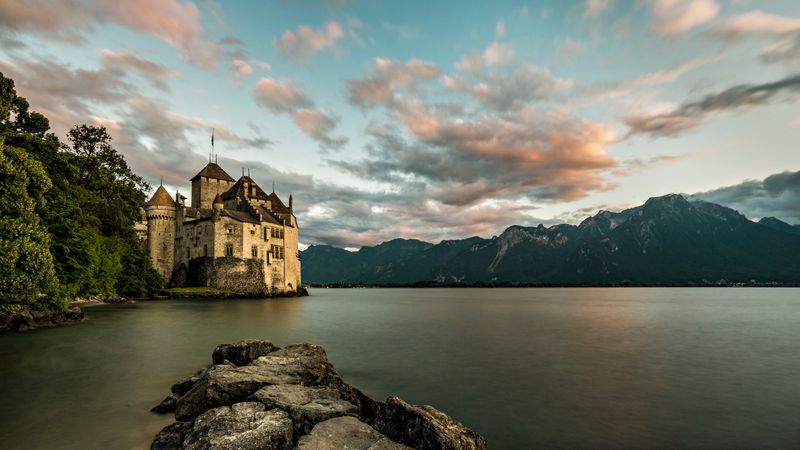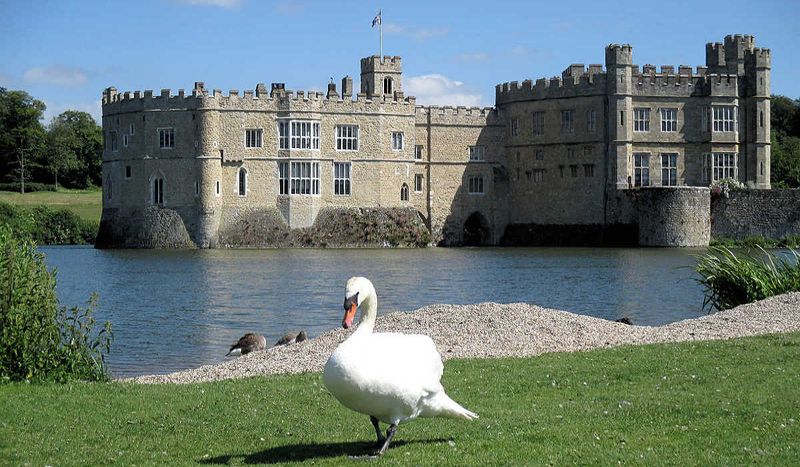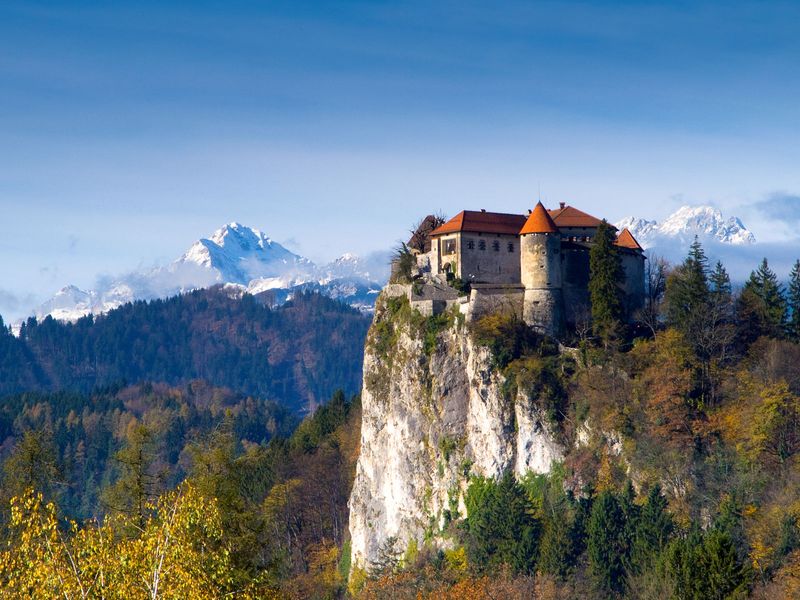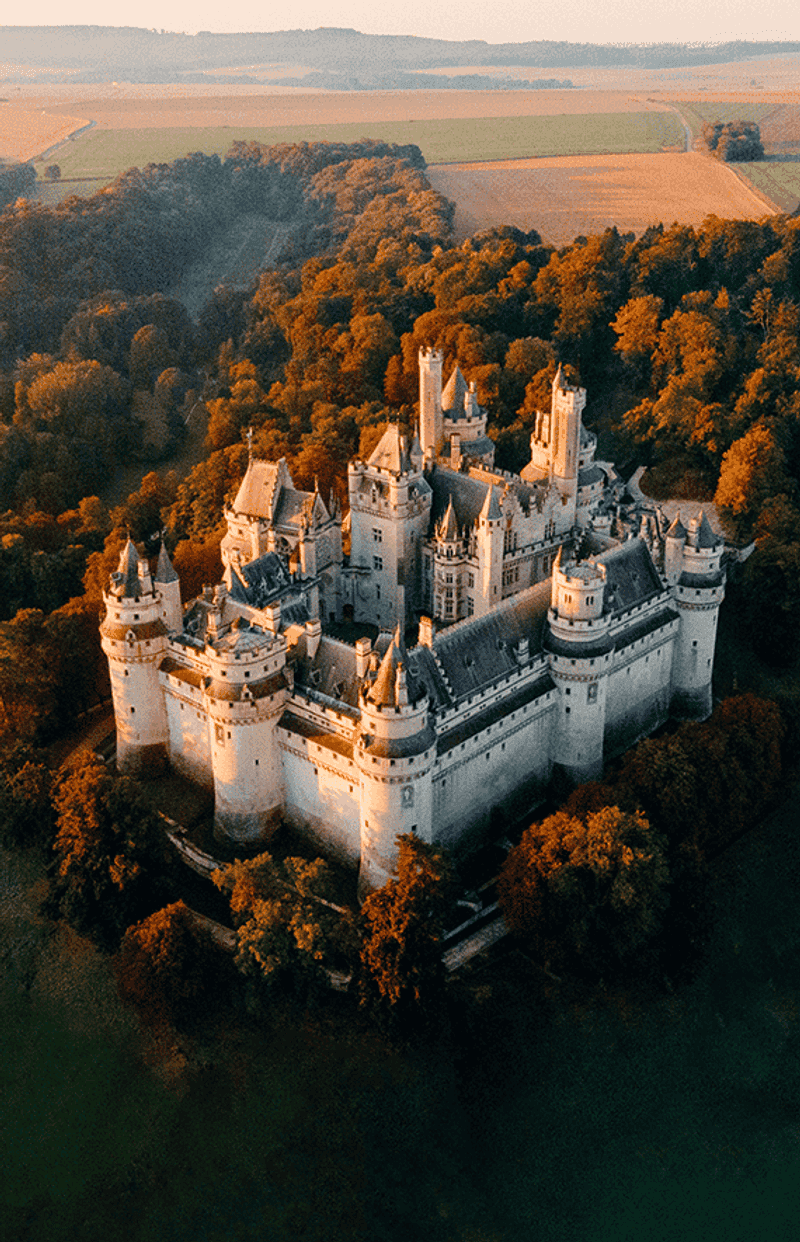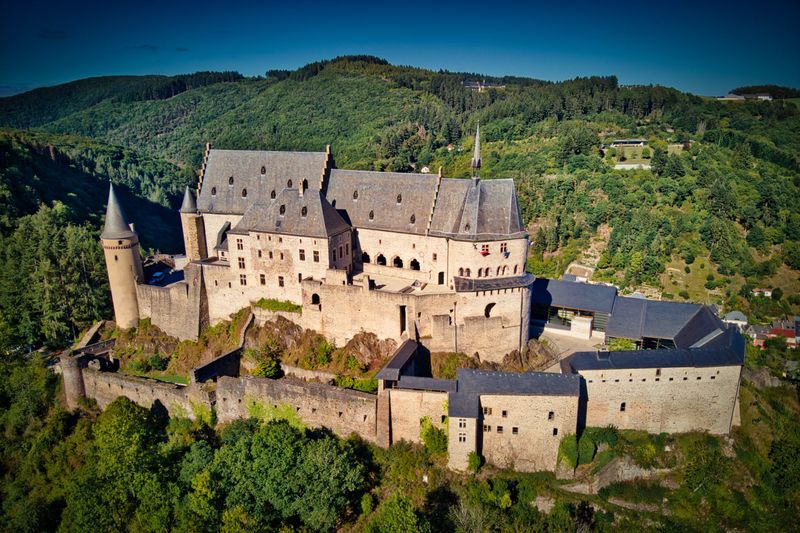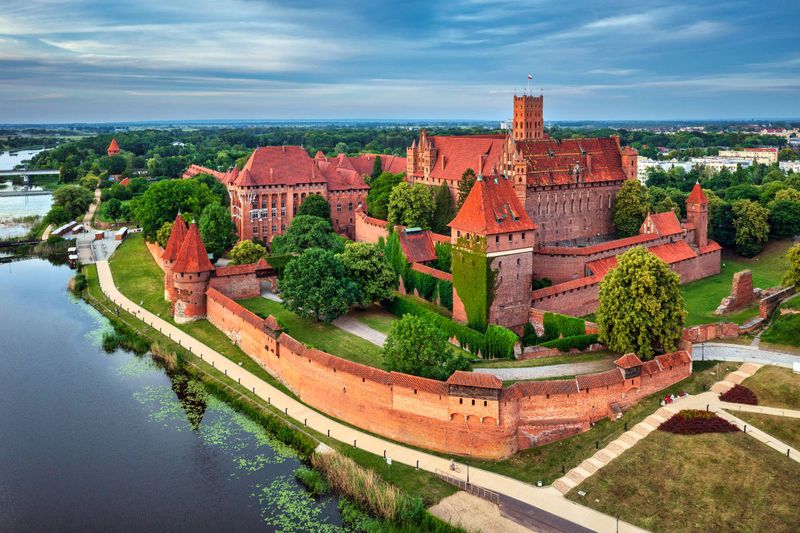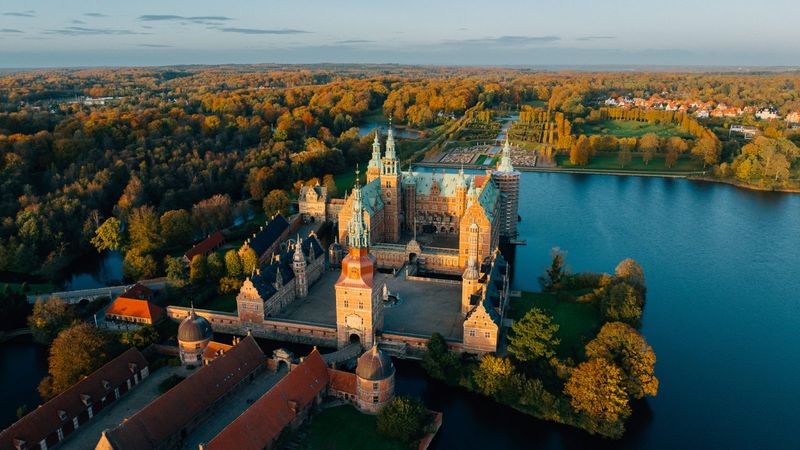They tower above cliffs, shimmer over moats, and rise like dreams out of fairy tales. Castles have always been more than stone walls and turrets—they’re living testaments to history, power, romance, and sometimes, wild imagination. From medieval strongholds to fantasy-like palaces, these 33 castles are some of the most breathtaking ever built—and yes, #17 really does exist.
1. Neuschwanstein Castle – Germany
Neuschwanstein Castle, nestled in the Bavarian Alps, is the epitome of romantic architecture. This enchanting castle inspired Walt Disney’s Sleeping Beauty Castle. Envisioned by King Ludwig II, Neuschwanstein rises majestically above lush forests and rugged cliffs. Its towers and turrets blend seamlessly with the serene landscapes, creating a vision straight from a fairy tale. Visitors are captivated by its opulent interiors, which reflect Ludwig’s admiration for composer Richard Wagner. Fun fact: Despite its medieval appearance, Neuschwanstein was constructed in the 19th century, making it relatively modern compared to other European castles.
2. Himeji Castle – Japan
Himeji Castle, known as the ‘White Heron Castle,’ stands as a paragon of Japanese feudal design. Its pristine white walls and elegant roofs resemble a heron taking flight, offering a stunning visual amidst the cherry blossoms. This UNESCO World Heritage Site is renowned for its ingenious defensive design, which has withstood the test of time. Its labyrinthine corridors and strategic fortifications were crafted to deter invasions. A marvel of construction, Himeji was completed in 1609 and remains an iconic symbol of Japan’s rich history. Did you know? It’s one of the few remaining original castles in Japan.
3. Alcázar of Segovia – Spain
Perched atop a rocky hill, the Alcázar of Segovia cuts a dramatic figure against the Spanish skyline. Its unique shape resembles a ship’s prow, earning it a place in countless legends. Originally built as a fortress, it later served as a royal palace, state prison, and military academy. Each stone in its walls echoes with stories of Spanish monarchy and medieval knights. As you wander through its grand halls and towers, imagine the tales of conquest and intrigue that unfolded here. Curiously, its design inspired the architecture of Disney’s Cinderella Castle.
4. Château de Chambord – France
The Château de Chambord stands as a testament to French Renaissance grandeur. With 440 rooms and an iconic double-helix staircase, it is a marvel of architectural ambition. Built by King Francis I, its design is attributed to none other than Leonardo da Vinci. The castle’s symmetrical beauty is mirrored in the tranquil waters of its moat, creating a serene yet majestic atmosphere. Visitors are often awestruck by its ornate facades adorned with mythical creatures and symbols. Did you know? Chambord was never intended as a permanent residence but rather a hunting lodge for the king.
5. Bran Castle – Romania
Nestled in the eerie Carpathian Mountains, Bran Castle exudes an air of mystery and legend. Often associated with the Dracula myth, this gothic fortress is steeped in Romanian folklore. While Vlad the Impaler, the Dracula inspiration, never lived here, the castle’s dark corridors and towering spires certainly fuel the imagination. Its strategic position served as a defense against Ottoman invasions, offering breathtaking views of the surrounding landscapes. Wandering through its ancient halls, one can almost hear echoes of past battles and legends. Bran Castle is a haunting reminder of Romania’s rich cultural tapestry.
6. Mont Saint-Michel – France
Rising from the sea like a dream, Mont Saint-Michel is more than just an abbey; it’s a marvel of medieval engineering. This tidal island, with its Gothic spires and winding streets, transforms with the tides, sometimes appearing as though it floats on the water. Historically, it served as a strategic fortification, offering sanctuary and defense. Its unique architecture harmonizes with the natural landscape, creating a breathtaking spectacle. A UNESCO World Heritage Site, Mont Saint-Michel remains an enduring symbol of French history and faith. Did you know? The island is connected to the mainland by a causeway.
7. Eilean Donan Castle – Scotland
Eilean Donan Castle, set at the confluence of three sea lochs, is a quintessential symbol of the Scottish Highlands. Its picturesque setting has made it a favorite location for filmmakers and photographers alike. The castle was originally built in the 13th century and has been destroyed and rebuilt several times, each reconstruction adding to its mystique. Surrounded by rugged landscapes and serene waters, it offers a glimpse into Scotland’s storied past. Visitors are drawn to its ancient stone walls and the myths that linger in every corner. Eilean Donan is truly a Highland gem.
8. Predjama Castle – Slovenia
Like something from a spy thriller, Predjama Castle is dramatically embedded into a cliffside cave. This Slovenian marvel combines natural and man-made wonders, creating an imposing fortress that defies imagination. Originally constructed in the 12th century, it was home to the legendary knight Erasmus, known for his daring exploits. The castle’s labyrinthine passageways and hidden chambers tell tales of rebellion and intrigue. Its unique position offered strategic advantages, making it nearly impenetrable to invaders. Visitors today can explore its mysterious depths and marvel at the ingenious blend of architecture and nature.
9. Bojnice Castle – Slovakia
Bojnice Castle, with its pastel hues and fairy-tale towers, enchants visitors with its romantic charm. Often deemed Slovakia’s most beautiful castle, its history dates back to the 12th century. Over centuries, it has transformed from a wooden fort to a grand stone chateau. The castle hosts numerous cultural and medieval festivals, where legends come alive amidst its splendor. A major highlight is the annual International Festival of Ghosts and Spirits, adding a playful twist to its serene beauty. Did you know? The castle’s enchanting appeal has made it a popular filming location for fairytale movies.
10. Castillo de Colomares – Spain
A tribute to Christopher Columbus, Castillo de Colomares is a whimsical blend of architectural styles. Built between 1987 and 1994, it stands as a modern homage to Spain’s Age of Discovery. Byzantine, Moorish, and Gothic influences collide in a kaleidoscope of colors and forms. The castle is not merely a monument but a storyteller, narrating tales of exploration and cultural fusion. Despite its youthful age, it evokes a sense of timeless wonder. A curious fact: it holds the title for the world’s smallest church inside its walls, a testament to its unique character.
11. Windsor Castle – England
Windsor Castle, a symbol of British monarchy, stands as the largest and oldest inhabited castle in the world. Its rich tapestry of history spans over 1,000 years, during which it has served as a royal residence and fortress. The castle’s grandeur is matched by its opulent interiors, reflecting centuries of art and culture. Each corner of Windsor whispers tales of state banquets and royal ceremonies. Visitors are often captivated by the Changing of the Guard and the stunning St. George’s Chapel. A fun fact: The castle was a favorite residence of Queen Elizabeth II.
12. Matsumoto Castle – Japan
Matsumoto Castle, affectionately known as ‘Crow Castle,’ boasts a striking black facade that stands out in the Japanese landscape. It’s one of Japan’s premier historic castles and a national treasure. The castle’s elegant structure includes a moat and a five-story keep, surrounded by cherry blossoms that peak in spring. Built in the late 16th century, it reflects the feudal era’s architectural prowess. Its interior, with steep wooden stairs and narrow windows, tells stories of samurai warriors and feudal lords. Interestingly, it’s one of Japan’s few surviving original castles, preserving its rich historical heritage.
13. Kilkenny Castle – Ireland
Kilkenny Castle has been a sentinel over the River Nore since the 12th century. Its storied walls have witnessed the passage of time, evolving from a medieval fortress to a stately home. The castle’s Norman stonework and elegant gardens entice visitors looking to explore Ireland’s rich heritage. Its majestic art galleries showcase centuries of Irish culture, offering a vivid window into the past. Did you know? Kilkenny Castle was bought by the local community for just £50 in the 20th century, ensuring its preservation for future generations. It’s a true Irish treasure.
14. Pena Palace – Portugal
Pena Palace is a kaleidoscope of colors and styles, perched high in the Sintra hills. This architectural wonder combines Neo-Gothic, Neo-Manueline, and Renaissance elements, reflecting Portugal’s rich cultural tapestry. The palace’s vivid hues stand out against the lush greenery, creating a striking visual contrast. Its whimsical design, commissioned by King Ferdinand II, was intended as a summer residence. Inside, visitors find lavish rooms filled with ornate furniture and stunning artwork. A fascinating fact: Pena Palace was one of the first examples of Romanticism in 19th-century Europe, influencing architecture across the continent.
15. Hohenzollern Castle – Germany
Hohenzollern Castle, perched on a mountaintop, seems to float above the clouds. This neo-Gothic masterpiece, with its soaring towers and intricate stonework, is a sight to behold. The castle serves as the ancestral seat of the Prussian royal family, and its halls echo with tales of nobility and power. Surrounded by breathtaking vistas, it’s a favorite among photographers and history enthusiasts alike. Each visit reveals more of its storied past, from medieval origins to modern renovations. Did you know? It hosts an annual Christmas market, adding festive charm to its grandeur.
16. Castle Stalker – Scotland
Castle Stalker exudes mystery and isolation, perched on a tidal islet in Loch Laich. Its remote location makes it accessible only by boat, adding to its enigmatic allure. Built in the 14th century, this tower house has witnessed centuries of Scottish history, from clan feuds to royal intrigue. Its rugged stone walls have endured the elements and time, standing as a testament to resilience. The castle’s haunting beauty often lures adventurers seeking a glimpse of its storied past. A curious fact: Castle Stalker was featured in Monty Python and the Holy Grail.
17. Swallow’s Nest – Ukraine
Swallow’s Nest, precariously perched on a cliff above the Black Sea, seems more like a fantasy than reality. This mini-Gothic castle, built in 1912, is a Ukrainian landmark known for its dramatic location and romantic design. Its turreted silhouette against the sky creates a picturesque view that captivates artists and travelers alike. Despite its small size, the Swallow’s Nest carries immense cultural significance, symbolizing resilience and beauty. Its unique charm has made it a popular tourist destination, drawing visitors to marvel at its architectural whimsy. Indeed, it’s a real-life fairy tale.
18. Catherine Palace – Russia
The Catherine Palace dazzles with baroque opulence just outside St. Petersburg. Known for its iconic blue-and-white facade and the legendary Amber Room, this palace was a summer residence for Russian tsars. Empress Elizabeth and Catherine the Great once roamed its gilded halls, hosting grand balls and diplomatic gatherings. The palace’s gardens, adorned with sculptures and fountains, offer a serene escape. Inside, visitors marvel at the intricate frescoes and lavish decor that reflect Russia’s imperial grandeur. Did you know? The Amber Room, once lost during WWII, has been meticulously reconstructed.
19. Conwy Castle – Wales
Conwy Castle, with its imposing medieval architecture, stands as a guardian of the Welsh landscape. Built by Edward I in the 13th century, its eight massive towers and fortified walls offer stunning views of the surrounding countryside. The castle’s strategic position was crucial during the English conquest of Wales, making it a vital stronghold. Walking through its ancient corridors, visitors step back in time to the era of knights and battles. A fun fact: Conwy Castle is part of a UNESCO World Heritage Site, preserving its historical and architectural significance for future generations.
20. Schönbrunn Palace – Austria
Though often termed a palace, Schönbrunn rivals any castle in opulence and grandeur. This Austrian landmark, once a summer residence for the Habsburgs, showcases baroque architecture at its finest. The palace’s lavish rooms and expansive gardens reflect the imperial lifestyle of Austria’s nobility. Visitors are enchanted by the Hall of Mirrors and the majestic Gloriette, offering panoramic views of Vienna. Each corner of Schönbrunn tells tales of imperial banquets and royal intrigues. Fun fact: The palace’s zoo, founded in 1752, is the world’s oldest, adding to its cultural richness.
21. Burg Eltz – Germany
Burg Eltz, a hidden gem nestled in a German forest, offers a magical journey into the past. This 850-year-old castle remains owned by the original family, preserving its medieval allure. Its towers and turrets rise mysteriously from the woodland, surrounded by mist and legends. Visitors are drawn to its authentic medieval interiors, which house treasures from centuries past. Walking through its halls, one can almost hear whispers of knights and noble families. A curious fact: The castle has never been destroyed, surviving wars and conflicts intact, which adds to its mystique and charm.
22. Arundel Castle – England
For nearly a millennium, Arundel Castle has been home to the Dukes of Norfolk, embodying English heritage. Its fortified walls and lush gardens offer a glimpse into medieval and modern times. Visitors are captivated by the grand interiors, which house a rich collection of artworks and historical artifacts. The castle’s towers provide panoramic views of the South Downs and the River Arun. Each room tells stories of royal visits and historical events that shaped England. Did you know? Arundel Castle hosts an annual medieval festival, bringing history to life with jousting and reenactments.
23. Château de Chillon – Switzerland
Château de Chillon, nestled on the shores of Lake Geneva, is a masterpiece of medieval architecture. Its picturesque location and storied walls have inspired poets and artists for centuries. The castle’s dungeons, towers, and halls offer a captivating journey through time, reflecting Switzerland’s rich history. Visitors are enchanted by the stunning views of the lake and mountains, as well as the intricate frescoes and artifacts within. A fun fact: Lord Byron penned ‘The Prisoner of Chillon’ after visiting the castle, adding to its literary fame. It’s a true Swiss gem.
24. Leeds Castle – England
Leeds Castle, often termed the ‘loveliest castle in the world,’ resides on islands in a serene lake. Its romantic architecture and gardens make it a favorite spot for weddings and events. The castle’s history dates back to the 9th century, having been home to six medieval queens. Inside, opulent rooms showcase exquisite tapestries and antiques. The grounds offer a range of outdoor activities, from falconry to maze adventures. Did you know? The castle was once a royal residence during Henry VIII’s reign, adding to its historical allure. It’s a must-visit British landmark.
25. Bled Castle – Slovenia
Perched high on a cliff overlooking Lake Bled, Bled Castle offers breathtaking vistas that captivate every visitor. This Slovenian treasure, with its medieval architecture and rich history, dates back to the 11th century. The castle’s museum showcases artifacts that narrate Slovenia’s cultural evolution. Visitors can explore ancient printing presses and wine cellars, experiencing a slice of the past. The panoramic views from the castle’s terraces are unrivaled, offering a serene escape from the modern world. Did you know? Bled Castle is Slovenia’s oldest castle, a timeless testament to its heritage and beauty.
26. Trakai Island Castle – Lithuania
Trakai Island Castle, rising from the tranquil waters of Lake Galvė, is a stunning example of Lithuanian Gothic architecture. This red-brick fortress, accessible by footbridge, offers a picturesque setting for exploration. Historically, it was a political and military center of the Grand Duchy of Lithuania. Its halls and towers echo with stories of knights and nobility. Today, visitors can enjoy cultural events and medieval reenactments within its walls. A fascinating fact: Trakai is one of the few surviving island castles in Eastern Europe, preserving its charm and historical significance for generations.
27. Château de Pierrefonds – France
Château de Pierrefonds, restored by Napoleon III, is a vision of medieval majesty. Its turrets and towers rise dramatically against the backdrop of the Compiègne Forest. Originally built in the 14th century, the castle was a symbol of royal power and prestige. The restoration breathed new life into its stone walls, transforming it into a fairy-tale castle. Visitors are transported to a time of chivalry and romance as they explore its grand halls. Did you know? The castle served as a setting for the BBC series ‘Merlin,’ adding to its allure. It’s a jewel of French heritage.
28. Castle Howard – England
Castle Howard, a baroque masterpiece, stands amidst the picturesque landscapes of North Yorkshire. Its grand design and lush gardens reflect the ambition and vision of the Howard family. The castle’s opulent interiors are adorned with rich tapestries, paintings, and antique furnishings that tell centuries of history. Visitors can stroll through the sprawling grounds, discovering hidden fountains and statues. Notably, Castle Howard gained fame as the backdrop for ‘Brideshead Revisited,’ enchanting viewers with its elegance. A fun fact: Construction took over a century, showcasing the dedication to creating this architectural marvel.
29. Vianden Castle – Luxembourg
Vianden Castle, perched on a hill overlooking the Our River, embodies the grandeur of medieval Luxembourg. This majestic fortress underwent extensive restoration to revive its historical splendor. Originally built between the 11th and 14th centuries, the castle served as a seat for the Counts of Vianden. Its imposing stone walls and towers offer panoramic views of the surrounding forested landscape. Visitors are drawn to its medieval charm and rich history, exploring rooms filled with armor and artifacts. Did you know? Victor Hugo stayed here during his exile, further enriching its cultural legacy.
30. Malbork Castle – Poland
Malbork Castle, the largest brick castle in the world, stands as a testament to medieval engineering and military architecture. Built by the Teutonic Knights in the 13th century, its expansive complex includes high walls, gateways, and towers. The castle’s red-brick facade dominates the landscape, evoking a sense of awe and wonder. Its halls and courtyards, once bustling with knights, now echo with stories of conquest and power. Visitors can explore its museum, which houses artifacts from its storied past. A curious fact: Malbork Castle is a UNESCO World Heritage Site, recognized for its historical significance.
31. Loarre Castle – Spain
Loarre Castle, one of Europe’s best-preserved Romanesque fortresses, offers a glimpse into Spain’s medieval past. Nestled in the Aragonese foothills, its strategic location provided military advantages during the Reconquista. The castle’s robust stone walls and watchtowers stand as silent witnesses to centuries of history. Visitors can explore its ancient chapel, battlements, and panoramic terraces overlooking the landscape. Known for its dramatic setting, Loarre inspired the backdrop for many films, including ‘Kingdom of Heaven.’ A fun fact: It’s considered one of the most beautiful castles in Spain, a true historical gem.
32. Frederiksborg Castle – Denmark
Frederiksborg Castle, set amidst serene lakes and lush gardens, is a masterpiece of Dutch Renaissance architecture. This Danish landmark was built by King Christian IV in the early 17th century. Its grand facade and intricate interiors house the Museum of National History, showcasing Denmark’s rich cultural heritage. Visitors are enchanted by its opulent rooms, adorned with portraits and artifacts from centuries past. The stunning gardens, featuring baroque terraces and fountains, provide a tranquil escape. Did you know? Frederiksborg Castle was rebuilt after a devastating fire in the 19th century, preserving its historical essence.
33. Niedzica Castle – Poland
Niedzica Castle, perched above the shimmering Dunajec River, is surrounded by legends and stunning vistas. Built in the 14th century, this Polish gem is linked to tales of hidden Incan treasure. Its medieval structure blends harmoniously with the picturesque landscape of the Pieniny Mountains. Visitors can explore its historic rooms and admire panoramic views from the castle’s towers. The nearby reservoir adds to its scenic charm, reflecting the castle’s storied silhouette. A fascinating fact: Niedzica Castle houses a museum dedicated to its rich history and the myths that envelop its walls.


